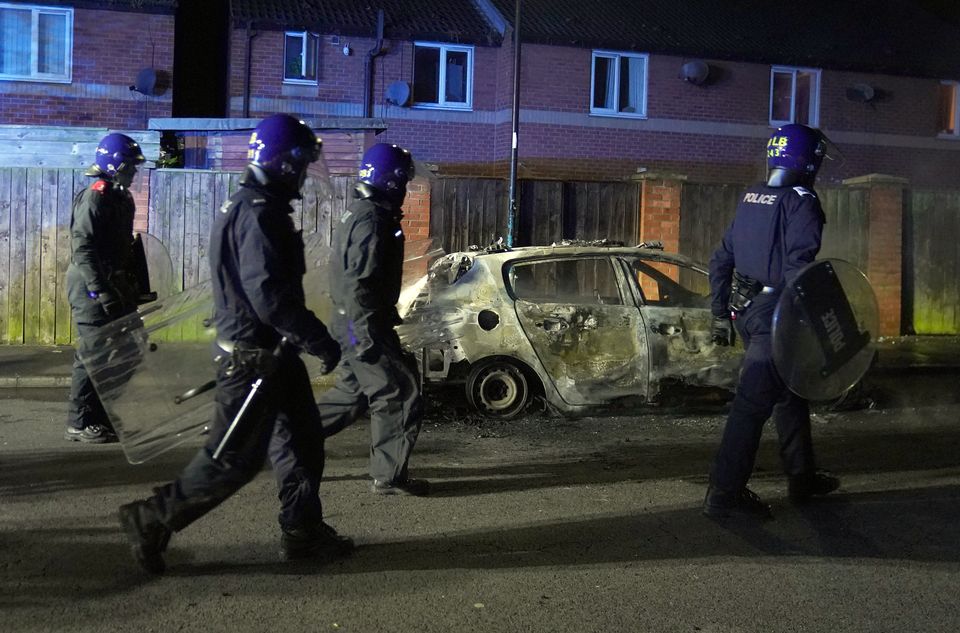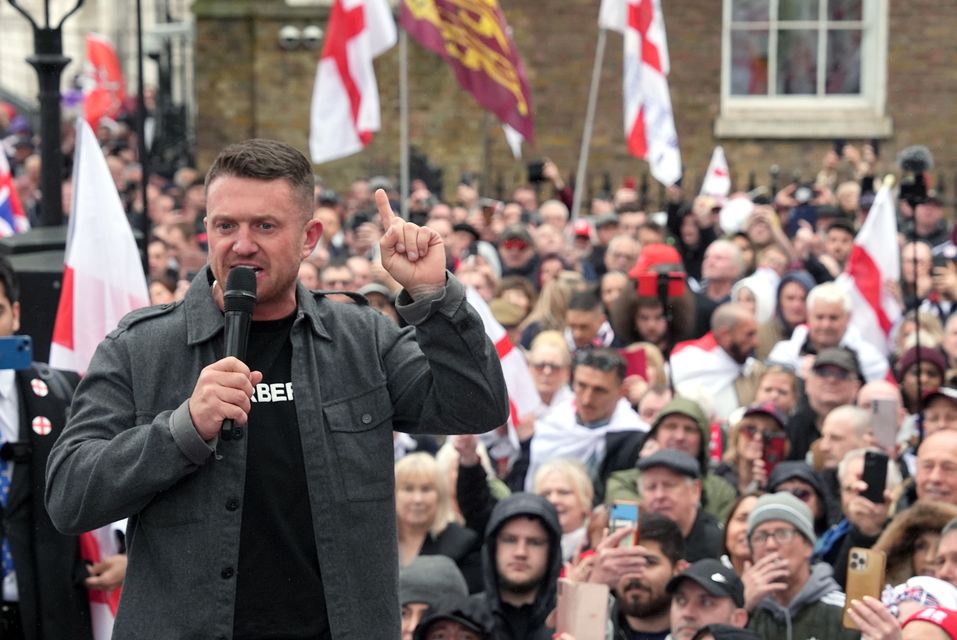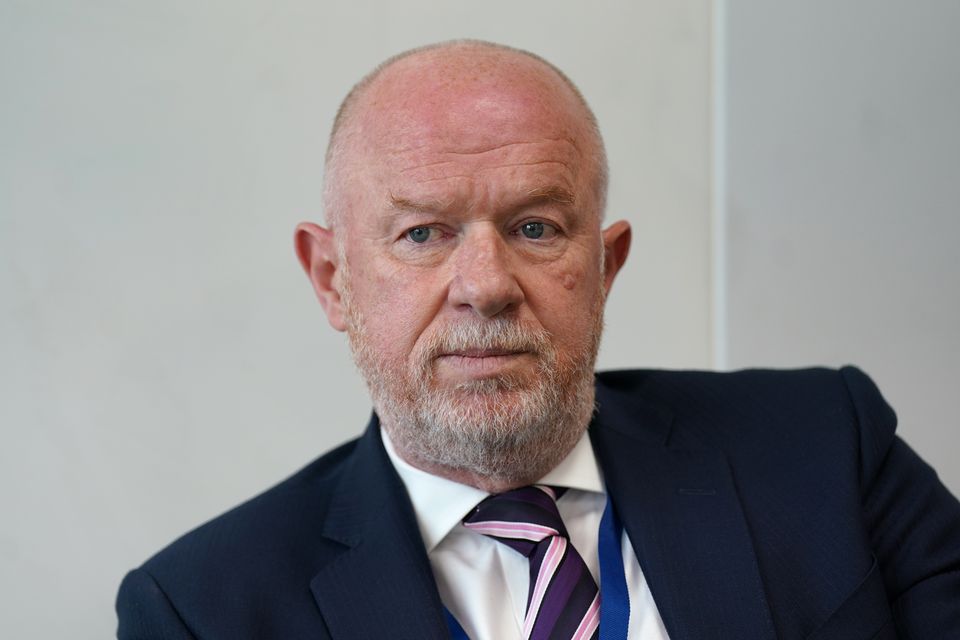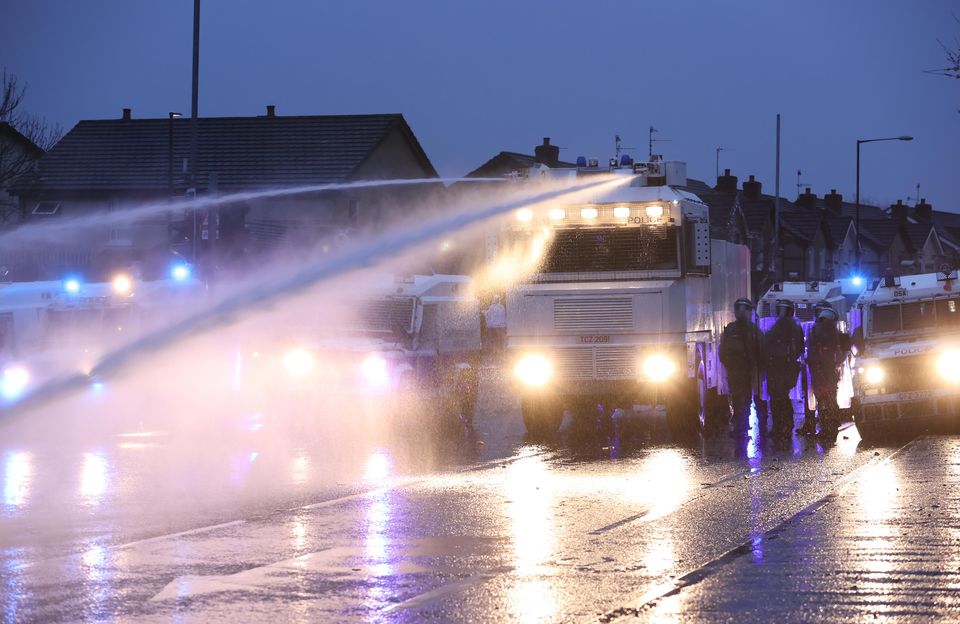Police failed to realise the significance of a series of precursor events leading up to the summer riots and there were gaps in intelligence linked to social media and the dark web, a watchdog has claimed.
His Majesty’s Inspectorate of Constabulary and Fire and Rescue Services (HMICFRS) published a new report on Wednesday on how police forces dealt with disorder that broke out after the murder of three girls at a holiday dance class in Southport.
It found that a number of events in 2023 and 2024 were indicators of potential future disorder, but this had not been reflected in police intelligence assessments.
A total of 302 officers were injured during the unrest, and there were concerns that some had been left without the right protective gear (Owen Humphreys/PA)
The report said: “We have found that the series of incidents of violence and disorder across the UK during 2023 and 2024 should have influenced the police service’s assessments of threat and risk.
“Our assessment of these incidents suggests that the risks of disorder were greater than the police believed them to be.
“They involved extreme nationalist sentiment, aggravated activism or serious disorder.
“All of them took place before the Southport killings and subsequent outbreaks of widespread disorder across the UK.”
The incidents highlighted included: disorder near asylum seeker hotels in Merseyside and Rotherham in February 2023, and from July to October in Llanelli.
Riots broke out after two teenagers died in an e-bike crash in May in Ely, Cardiff, and in November there was violence as protesters clashed over Armistice Day weekend in London.
In April 2024 disorder broke out at a St George’s Day parade in London, and rival protesters clashed during a demonstration organised by Tommy Robinson in June.
Disorder broke out at a rally at a St George’s Day Parade attended by Tommy Robinson (Jordan Pettitt/PA)
The few weeks before the post-Southport disorder saw unrest in Harehills, Leeds; the stabbing of a soldier in Kent; and a protest in Rotherham over footage of police officers using force while making arrests at Manchester Airport.
There was also another mass rally organised by Tommy Robinson in London on July 27.
The report also found that police chiefs brought in a system where officers are moved between forces to bolster resources too late.
It recommended that the protocol should have been brought in on Friday August 2, particularly as it was the start of the weekend and the weather was forecast to be good.
The system was not brought in until four days later, meaning that there were too many incidents where static lines of officers were being pelted with missiles and there were not enough of them to arrest troublemakers, the watchdog found.
Chief Inspector of Constabulary Andy Cooke said: “We found the police decisions to co-ordinate and mobilise those public order officers nationally were made too late, and the police didn’t have a proper intelligence picture of the rising tide of violence.
“There were gaps in their intelligence functions, especially around the analysis of social media and other dark web media, and no one understood or could counter the emerging cause and effect of that misinformation and disinformation.
“So the police failed adequately to denounce it or mitigate against it in real time to deter or curtail the disorder.”
Andy Cooke said there were gaps in police intelligence about the potential for disorder (Kirtsy O’Connor/PA)
In total, 302 officers were injured during the unrest, of whom 54 were admitted to hospital. The day with the largest number deployed was August 10, when 6,675 public order officers were on duty.
Mr Cooke has called for a national co-ordinator put in charge who could instruct forces to provide mutual aid and said some chief constables had dragged their feet over doing so.
There were also concerns about some officers being sent out in regular uniform rather than riot gear.
Mr Cooke said: “I doubt it will be another 14 years before we see serious disorder. I hope it is, but I doubt it.
“I think we’re in a different place, there are far more tensions across communities and far more ways of sharing information across the community.
“So policing needs to ensure that it’s ready for whenever that next disorder will be.”
Some commanders had raised the possibility of being allowed to use water cannons to disperse rioters in future – a measure that has been used in Northern Ireland before.
The report may reignite the debate over whether water cannon could ever be used by police on the UK mainland. (Liam McBurney/PA)
This was rejected by then-Home Secretary Theresa May in 2015, on the grounds that it could cause harm and could damage the principle of consent on which UK policing operates.
London Mayor Boris Johnson spent more than £300,000 on three of the devices that remained unused and were later sold for scrap at a fraction of the cost.
The report said: “We acknowledge that use of water cannon by police in Great Britain would be highly controversial.
“There is limited police or other academic evidence about the effectiveness of its use. Opinions remain divided, even among senior police officers.
“And it was beyond the scope of this review to evaluate water cannon as a potential tactical option.
“Nearly 10 years have passed since the then Home Secretary’s statement. Inevitably, conditions within society change over time.
“For that reason alone, it may be timely to explore whether current and foreseeable circumstances might render the use of water cannon conceivable.”
Mr Cooke said while the systems under which officers operate need to change, they should be praised for the way they handled the riots.
“Officers displayed immense bravery in the face of extreme violence. It is to their enormous credit that they kept the public safe.
“Many police officers sustained injuries, and some were hospitalised.
“The violence officers suffered is shameful and unacceptable. They deserve the public’s full support.”
A second report on the riots will be published by HMICFRS in April.
The National Police Chiefs’ Council lead for public order, Chief Constable BJ Harrington, said: “The report states that, with hindsight, the national mobilisation plan should have been made earlier, and this is a helpful recommendation.
“Hindsight can be useful, and these learnings are important, but we are pleased that the inspectorate also recognise how complex of a situation this was for policing to respond to, and that on the whole, the service did so well.
“Of particular note, I’m pleased that the report recognises that the mobilisation of resources was instrumental in ending the disorder and restoring peace to our towns and cities.
“This was the largest mobilisation of public order public safety officers since 2011, and it is encouraging to see that the report acknowledges the immense bravery and professionalism shown by our people at this time, often in the face of serious abuse and threats.”
He said that the report’s findings and recommendations will be “considered very carefully”.



